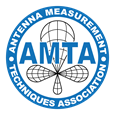Member Login

Welcome back to the
Antenna Measurement Techniques Association’s
login page!
If you don’t recall your login credentials, please go to “login help”
Login Failed
Possible reasons:
- Invalid Member Login / Password combination.
- Too many login attempts; you must wait 5 minutes before logging in again.
If you do not know your login, please use the Reset Password feature.
Login Failed
We are sorry but your login has failed.
Please contact us at join@amta.org and provide error code: A54. Thank you.
Calendar
|
|
||||||
|---|---|---|---|---|---|---|
| S | M | T | W | T | F | S |
| 1 | 2 | 3 | ||||
| 4 | 5 | 6 | 7 | 8 | 9 | 10 |
| 11 | 12 | 13 | 14 | 15 | 16 | 17 |
| 18 | 19 | 20 | 21 | 22 | 23 | 24 |
| 25 | 26 | 27 | 28 | 29 | 30 | 31 |
- Submit An Event to the AMTA Calendar
- - AMTA Webinar: Signal Derivative Sampling in Electromagnetic Field Measurements - 05/08/2025, 11:00 AM - 12:00 PM EST/EDT
- - Applied Computational Electromagnetics Society (ACES) Symposium - 05/18/2025 - 05/21/2025
- - AMTA Regional Meeting - 05/20/2025 - 05/21/2025
2025 Antenna Measurement Techniques Association. All Rights Reserved.
